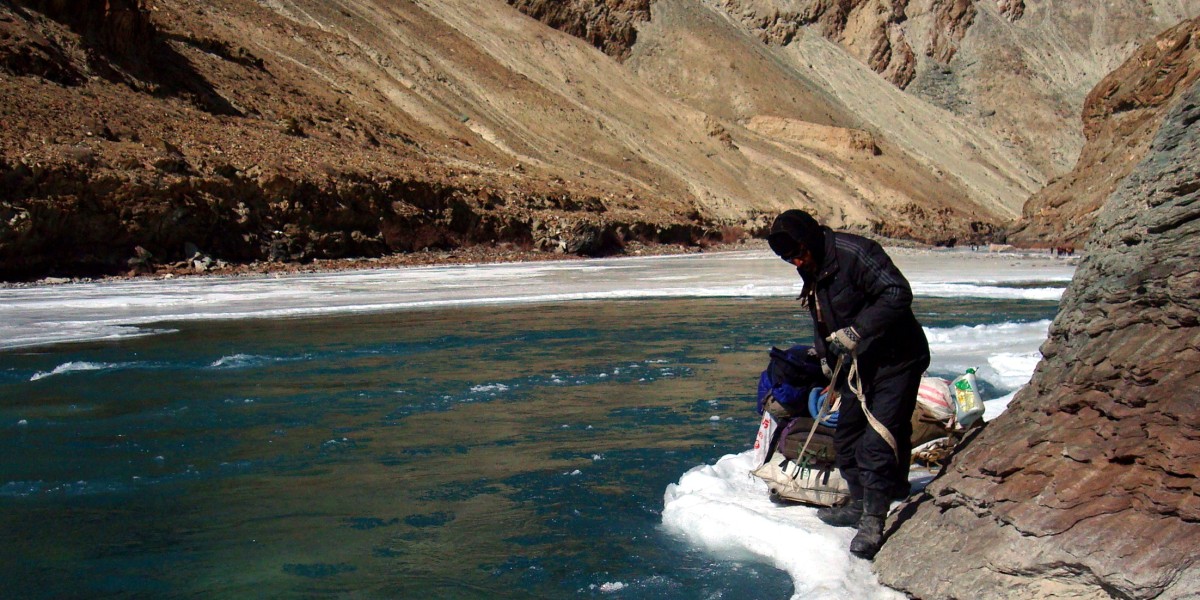Introduction: Unlocking the Seasons of Chadar Trek
Nestled in the majestic Himalayas lies a trekking expedition unlike any other - the Chadar Trek. Renowned for its unique blend of adventure and awe-inspiring natural beauty, it beckons to those seeking a thrilling escapade amidst frozen landscapes and towering cliffs. However, the key to a successful and safe Chadar Trek lies in choosing the ideal season. This guide delves into the various seasonal possibilities for the Chadar Trek, helping you discover the perfect time to embark on this unforgettable journey.
Winter Wonderland: January to February
The Enchantment of Winter Wonders:
Undoubtedly, the winter Chadar Trek is a captivating experience for those daring enough to embark on it. This season, spanning from January to February, encapsulates the essence of adventure and natural beauty. It's a time when the Zanskar River dons its icy armor, offering a surreal platform for intrepid trekkers to explore.
Advantages of the Winter Expedition:
- Frozen River Fantasy: The Zanskar River reaches its zenith of freezing glory during this period, allowing you to step onto the icy stage, a hallmark of the Chadar experience.
- Picturesque Snowscapes: The entire landscape becomes a canvas of pristine white, enveloping you in a winter wonderland that seems plucked from a storybook.
Shoulder Season: Late February to Early March
The Transition Period
The period from late February to early March marks the transition from winter to spring in the Zanskar region. During this time, the river starts thawing, creating a unique blend of challenges and beauty.
Advantages of the Shoulder Season:
- Changing Landscape: As the ice begins to melt, you witness the river transforming, with patches of open water amidst the frozen sections.
- Moderate Temperatures: While it's still cold, temperatures are milder compared to peak winter, making the trek slightly more comfortable.
- Photographic Opportunities: The contrast between the ice and water creates incredible photographic opportunities.
- Fewer Tourists: The trek is less crowded than in January and February, allowing for a more intimate experience.
Challenges of the Shoulder Season:
- Unpredictable Conditions: The changing state of the river makes it unpredictable, and you must be cautious of thin ice and open water.
- Limited Availability: Finding a spot on the trek can be challenging as this is a short-lived window between seasons.
- Colder Nights: Nights can still be quite cold, so you need to be prepared for freezing temperatures.
Spring Awakening: Mid-March to April
The Emerging Beauty
Springtime, from mid-March to April, brings a completely different vibe to the Chadar Trek. As the temperatures rise, the Zanskar River thaws further, and the surrounding landscape undergoes a remarkable transformation.
Advantages of the Spring Trek:
- Milder Weather: Daytime temperatures are more comfortable, making it easier to trek without the extreme cold of winter.
- Stunning Scenery: The snow begins to recede, revealing the rugged terrain and unique rock formations of the Zanskar Valley.
- Easier Terrain: Walking becomes less strenuous as the ice melts, revealing the river's rocky bed.
- Flora and Fauna: Spring brings with it the possibility of spotting wildlife and blooming flowers, adding to the trek's beauty.
Challenges of the Spring Trek:
- Thinning Ice: The river continues to thaw, so there is an increased risk of encountering open water and tricky sections.
- Shorter Season: The trek is only possible for a limited time during this season, making it essential to plan in advance.
- Permit Availability: Like the winter trek, permits can be in high demand during this season.
Conclusion
In conclusion, the best season for the Chadar Trek depends on your preferences, experience level, and willingness to embrace the challenges. For the classic, adrenaline-pumping experience, January and February are unbeatable, allowing you to conquer the frozen river amidst a pristine winter landscape. Late February to early March offers a unique transitional experience, combining the beauty of thawing ice with milder temperatures. Finally, mid-March to April provides a more comfortable trekking experience with emerging flora and fauna but comes with the challenge of rapidly changing river conditions.
Regardless of the season you choose, always prioritize safety, proper gear, and experienced guides. Each season offers its own charm and allure, ensuring that the Chadar Trek remains a bucket-list-worthy adventure for all those who seek the thrill of trekking in the stunning Himalayas. Ultimately, your choice of season should align with your personal preferences, the level of adventure you seek, and your readiness to embrace the natural wonders and challenges of this extraordinary journey.



